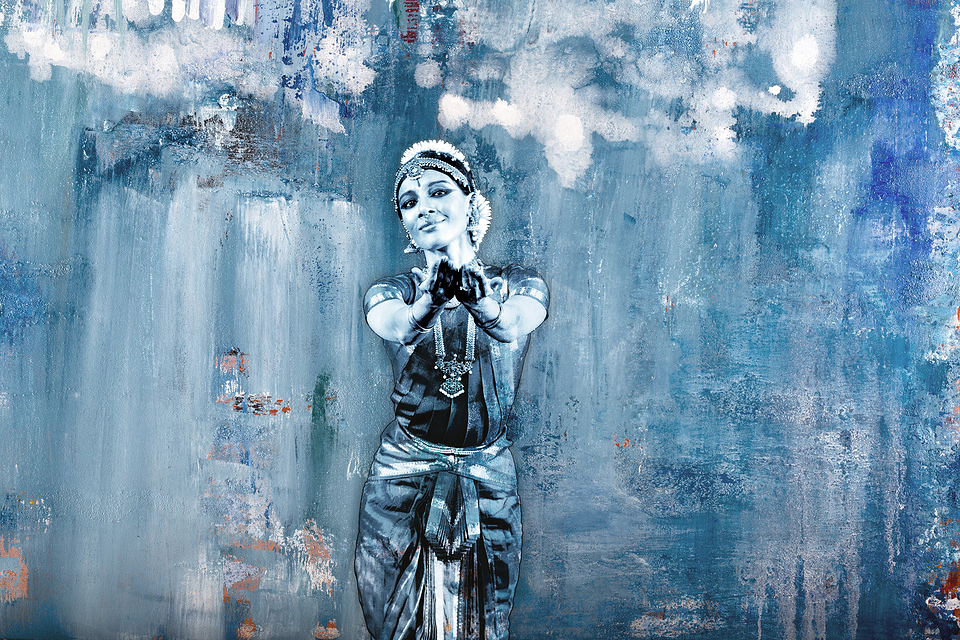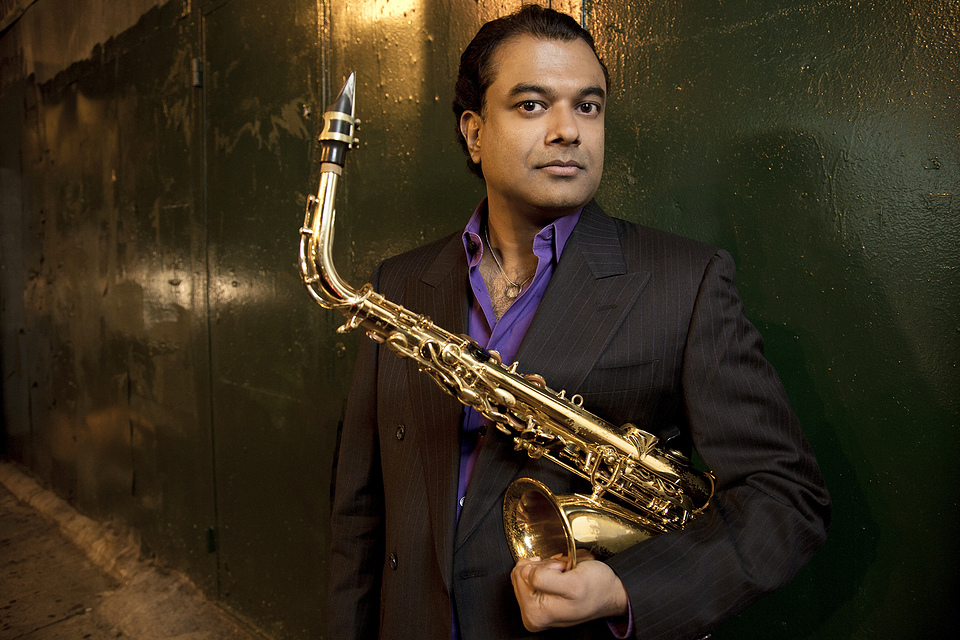A Most Eloquent Dance
Ragamala Dance's collaboration with saxophonist and composer Rudresh Mahanthappa is the company's most sensual, thrilling work to date and, fresh from a premiere at the Walker, it's about to hit New York City's Lincoln Center.

When Ranee Ramaswamy founded Ragamala Dance in 1992 (it was Ragamala Music and Dance Theater back then), she immediately turned two conventions of the Southern Indian dance form, bharatanatyam, inside out. She expanded it from a solo mode of dance into a prismatic construction for an entire company of performers. She also began pushing the boundaries of the ancient temple dance, collaborating over the years with poets, North Indian musicians, a sign-language performer, Javanese gamelan and Balinese kecak performers, an African dance troupe, and local tap, ballet, flamenco and jazz dancers–with never a misstep.
The company had solid footing last weekend, too, during the world premiere of Song of the Jasmine at the Walker Art Center. Choreographed by co-directors Aparna and Ranee Ramaswamy, the collaboration with New York-based jazz saxophonist and composer Rudresh Mahanthappa was a ravishing integration of demure yet sensually forceful dancing, thrilling music both improvised and scored, and staging that spatially framed the performers of Ragamala Dance in new ways.

As the music has been expertly and eloquently written about elsewhere, consider two aspects that, for me—after years of viewing, contemplating and writing about Ragamala—Song of the Jasmine brought to the fore. One concerns narrative.
Seduction, pleasure, grief and curiosity emanate from the dancers’ faces. They inscribe the space with expansive arms and ignite the air with rapturous release.
Bharatanatyam is an intensely articulate dance of sculptural poses, facial expressions, percussive feet and illustrative gestures meant to express a chosen Hindu text. When performing the nritya aspect of the dance, a performer embodies and manifests a character. The natya aspect has meaning and emotions. The nritta aspect is pure abstract movement.
Song of the Jasmine, even without reading the explicatory program note, is clearly the company’s most sensual piece to date. Seduction, pleasure, gratitude, as well as fear, questioning, grief and happiness emanate from the dancers’ faces—and age here matters, as Aparna’s youthful, knowing face registers such emotions quite differently than Ranee’s, whose expressions are inflected with a more understated wisdom.
All of the dancers—including Jessica Fiala, Tamara Nadel and Ashwini Ramswamy—scatter, sow and gather (attentions, seeds, emotions, jasmine?) with poetic articulation. They inscribe the space with expansive arms and ignite the air with rapturous release. They are arrows, Shiva, rain, supplicants and lotus blossoms unfolding. The sensuality of their storytelling—underscored by the alternately plaintive and fiery music, particularly Mahanthappa’s saxophone and Rajna Swaminathan’s percussively cursive drumming—is thrilling.
Do we need to know, as the program notes, that the piece was “guided by the writings of the 8th-century Tamil mystic poet, Andal, whose Nachiar Tirumozhi (Sacred Sayings of the Goddess)—a text of 143 verses—reveals Andal’s intense longing for Vishnu” and “presents an unparalleled intensity of emotion”? Or that in the work, Andal “erases any dichotomy between the sacred and the personal and seamlessly interweaves the two as she expresses deep longing, anguish of separation, ecstasy, and the desire to merge the soul with theParamatman, or Supreme Consciousness”?
Doesn’t hurt. And after 22 years blessed with Ragamala repertoire, we’ve come to expect such explanations. Still, what’s the work of the audience imagination while watching the piece? As we experience this lovely, abstract, yet often representational movement, whose story is it? Their story, Andal’s story or our own?
The staging for Song of the Jasmine–the performance space was subtly divided into three parts–highlighted a second aspect to Ragamala’s new work. Each time the dancers moved from a compressed space beneath 80 bells hanging from the flyspace on one side, to the narrow area in the middle with high open flyspace, to behind the platform of musicians occupying the other side of the stage, further dimension was imparted. Movement and emotions were condensed, released or supported by the space, inciting both imagination and narrative in ways bharatanatyam‘s progenitors could never have foreseen.
Noted event information: Song of the Jasmine, co-commissioned by the Walker Art Center and three other arts organizations, made its world premiere at the Walker Art Center in Minneapolis May 15 through 18. Ragamala Dance and saxophonist and composer Rudresh Mahanthappa will perform the work again in the Twin Cities at the Dance USA conference on June 19. Song of the Jasmine begins an 11-city national tour starting in August, beginning with a show in New York City’s Lincoln Center.